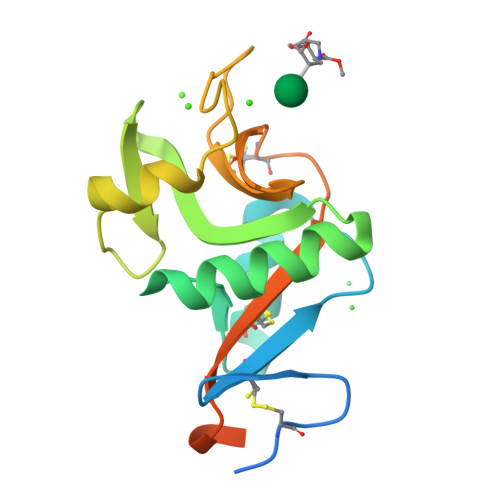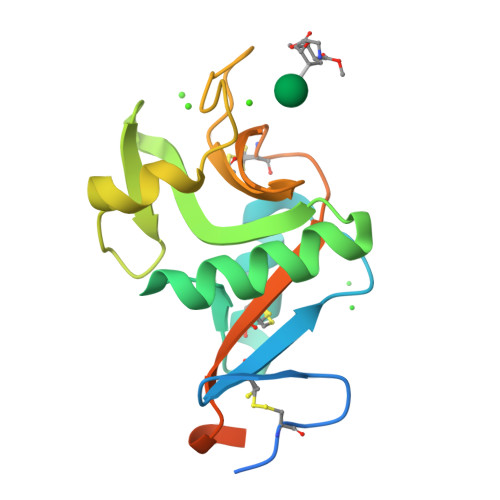Structure of a Glycomimetic Ligand in the Carbohydrate Recognition Domain of C-Type Lectin Dc-Sign. Structural Requirements for Selectivity and Ligand Design.
Thepaut, M., Guzzi, C., Sutkeviciute, I., Sattin, S., Ribeiro-Viana, R., Varga, N., Chabrol, E., Rojo, J., Bernardi, A., Angulo, J., Nieto, P.M., Fieschi, F.(2013) J Am Chem Soc 135: 2518
- PubMed: 23360500
- DOI: https://doi.org/10.1021/ja3053305
- Primary Citation of Related Structures:
2XR5 - PubMed Abstract:
In genital mucosa, different fates are described for HIV according to the subtype of dendritic cells (DCs) involved in its recognition. This notably depends on the C-type lectin receptor, langerin or DC-SIGN, involved in gp120 interaction. Langerin blocks HIV transmission by its internalization in specific organelles of Langerhans cells. On the contrary, DC-SIGN enhances HIV trans-infection of T lymphocytes. Thus, approaches aiming to inhibit DC-SIGN, without blocking langerin, represent attractive anti-HIV strategies. We previously demonstrated that dendrons bearing multiple copies of glycomimetic compounds were able to block DC-SIGN-dependent HIV infection in cervical explant models. Optimization of such ligand requires detailed characterization of its binding mode. In the present work, we determined the first high-resolution structure of a glycomimetic/DC-SIGN complex by X-ray crystallography. This glycomimetic, pseudo-1,2-mannobioside, shares shape and conformational properties with Manα1-2Man, its natural counterpart. However, it uses the binding epitope previously described for Lewis X, a ligand specific for DC-SIGN among the C-type lectin family. Thus, selectivity gain for DC-SIGN versus langerin is observed with pseudo-1,2-mannobioside as shown by surface plasmon resonance analysis. In parallel, ligand binding was also analyzed by TR-NOESY and STD NMR experiments, combined with the CORCEMA-ST protocol. These studies demonstrate that the complex, defined by X-ray crystallography, represents the unique binding mode of this ligand as opposed to the several binding orientations described for the natural ligand. This exclusive binding mode and its selective interaction properties position this glycomimetic as a good lead compound for rational improvement based on a structurally driven approach.
Organizational Affiliation:
Institut de Biologie Structurale, Université Grenoble I, 41 rue Jules Horowitz, Grenoble, F-38027, France.





















